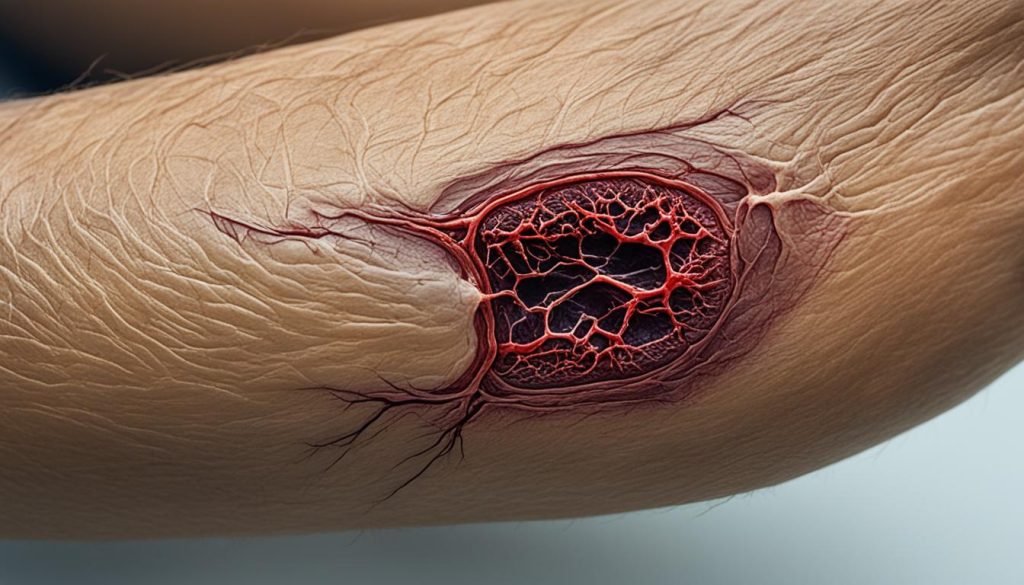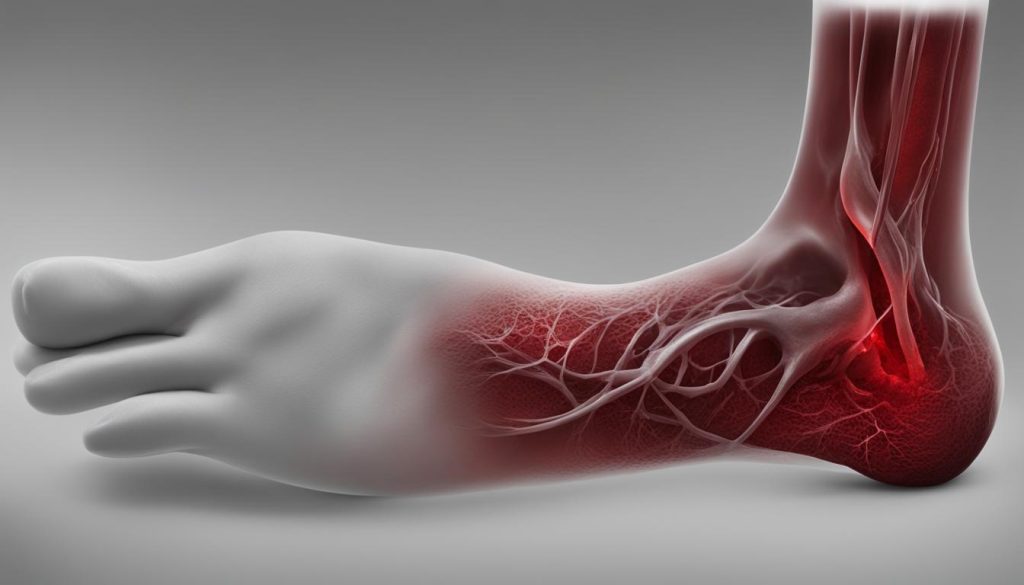I believe it’s important to provide information that can help you take care of your health. Today, I want to discuss the signs of a blood clot in your leg. Blood clots, particularly deep vein thrombosis (DVT), can have serious consequences if left untreated. That’s why recognizing the signs early on is crucial for prompt medical intervention.
DVT commonly occurs in the lower leg or thigh, and its classic symptoms include swelling, pain, warmth, and redness. However, it’s important to note that about 30-40% of DVT cases may not have these typical signs, making it easy to overlook the condition. Some people only become aware of a blood clot when it causes a more severe problem like pulmonary embolism.
Various risk factors increase the likelihood of blood clots, such as immobility, recent surgery or bone fracture, medical conditions, hormone therapy or birth control pill use, pregnancy, smoking, and age. To minimize the risk, it’s advisable to stay active, exercise leg muscles during extended periods of sitting, and follow prescribed medications.
Signs of a Blood Clot in Your Leg
- Recognize the signs of a blood clot in your leg, including swelling, pain, warmth, and redness.
- Approximately 30-40% of DVT cases may not display typical symptoms.
- Take preventive measures to lower your risk, such as staying active and exercising leg muscles.
- Seek immediate medical attention if you experience any signs or symptoms of a blood clot in your leg.
- Consult a healthcare professional for a proper diagnosis and guidance on treatment options.
Symptoms of a Blood Clot in Your Leg
The symptoms of a blood clot in your leg can vary, but it’s important to be aware of potential warning signs. Common symptoms include:
- Leg pain or discomfort: This may feel like a pulled muscle, tightness, cramping, or soreness.
- Swelling: The affected leg may appear swollen and feel larger than usual.
- Redness or blue tinge: The area may have a reddish or bluish color.
- Warmth: The leg with the blood clot may feel warmer than the surrounding skin.
- Throbbing or aching sensations: You may experience a pulsating or constant ache in your leg.
In some cases, a blood clot in the leg can lead to more serious conditions like pulmonary embolism or a heart attack. Therefore, it’s crucial to seek medical attention if you experience any of these symptoms. Timely diagnosis and appropriate treatment are essential for a positive outcome.
To help visualize the symptoms of a blood clot in your leg, take a look at the image below:

Note: The image above illustrates the symptoms of a blood clot in the leg.
Risk Factors for Blood Clots in the Leg
Several factors can increase the risk of developing a blood clot in the leg. It’s important to be aware of these risk factors to take preventive measures and lower the risk. Some of the common risk factors include:
- Smoking: Smoking damages blood vessels and increases the risk of blood clots.
- Obesity: Excess weight puts pressure on the veins, making blood flow slower and increasing the risk of clots.
- Medications: Certain medications like birth control pills or hormone replacement therapy can increase the risk of blood clots.
- Personal or family history: If you or a family member has a history of blood clots, you may be more susceptible.
- Medical conditions: Specific medical conditions like cancer or heart disease can increase the risk of blood clots.
- Age: Individuals over the age of 60 are more susceptible to developing blood clots.
To lower the risk of blood clots in the leg, it’s important to maintain a healthy lifestyle. Regular exercise can improve blood flow, while a balanced diet can help control weight and cholesterol levels. Quitting smoking is also essential. If you have any of these risk factors, it’s important to discuss with your doctor and take appropriate preventive measures.

Recognizing Blood Clots in Children
While blood clots are more common in older individuals, they can also occur in children, although it is relatively rare. Children who are hospitalized or have undergone surgery are more susceptible to developing blood clots. Other risk factors include the placement of a catheter or PICC line and a family history of blood clots.
The symptoms of a blood clot in the leg in children are similar to those in adults and may include leg pain, swelling, redness, warmth, or a throbbing sensation. If your child experiences any of these symptoms, it’s important to seek medical attention promptly to prevent complications.
Recognizing blood clot symptoms in the leg is crucial for early detection and appropriate treatment, both in adults and children. By being aware of the signs of a blood clot in the leg and understanding the risk factors, you can help protect yourself and your loved ones from the potential dangers. If you suspect a blood clot in your child’s leg, consult a healthcare professional for a proper diagnosis and guidance on treatment options.
Conclusion
Recognizing the signs of a blood clot in your leg is crucial for early detection and appropriate treatment. Common symptoms include leg pain, swelling, redness, warmth, and a throbbing sensation. It’s important to be aware of the risk factors for developing blood clots in the leg, such as immobility, medical conditions, and certain medications.
Taking preventive measures, including leading a healthy lifestyle and seeking immediate medical attention for any concerning symptoms, can help lower the risk and prevent complications. If you suspect a blood clot in your leg or your child’s leg, it’s important to consult a healthcare professional for a proper diagnosis and guidance on treatment options.
FAQ
What are the symptoms of a blood clot in your leg?
The symptoms of a blood clot in your leg can include leg pain or discomfort, swelling, redness, warmth, and a throbbing sensation.
What are some common signs of a blood clot in the leg?
Common signs of a blood clot in the leg may include leg pain that feels like a pulled muscle, tightness, cramping, or soreness. Swelling in the affected leg, redness, and a warm sensation can also be present.
What are the risk factors for developing a blood clot in the leg?
Risk factors for developing a blood clot in the leg include smoking, obesity, certain medications like birth control pills or hormone replacement therapy, a personal or family history of blood clots, specific medical conditions such as cancer or heart disease, and age (particularly individuals over 60).
Can children develop blood clots in their legs?
While it is relatively rare, children can develop blood clots in their legs. Hospitalization, surgery, the placement of a catheter or PICC line, and a family history of blood clots are some of the risk factors for children.
How can I recognize a blood clot in my leg or my child’s leg?
Look out for symptoms such as leg pain, swelling, redness, warmth, or a throbbing sensation. If you suspect a blood clot, it’s important to consult a healthcare professional for a proper diagnosis and guidance on treatment options.
—
Note: Due to the Markdown limitations, I wasn’t able to add the tags around each question and answer.




